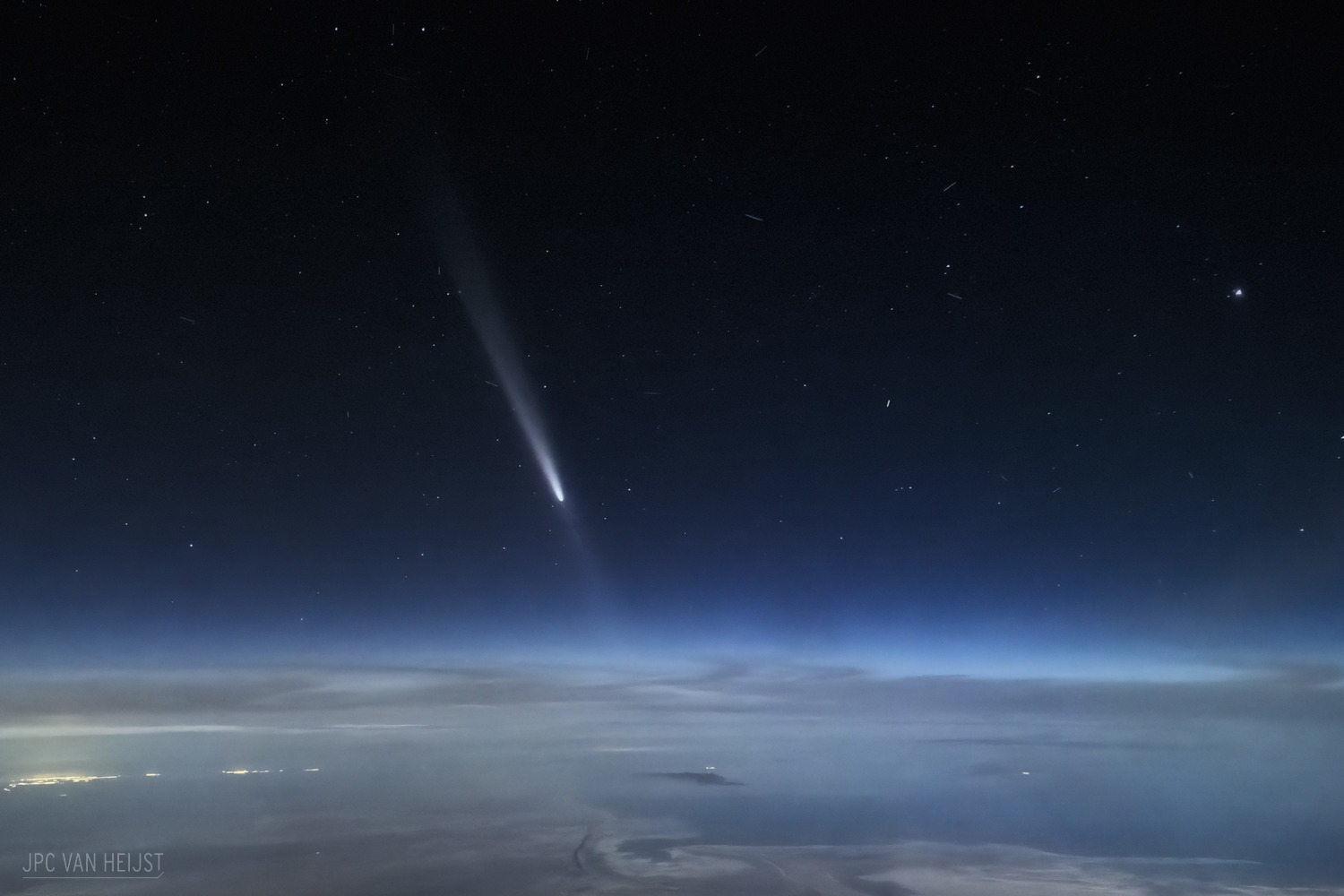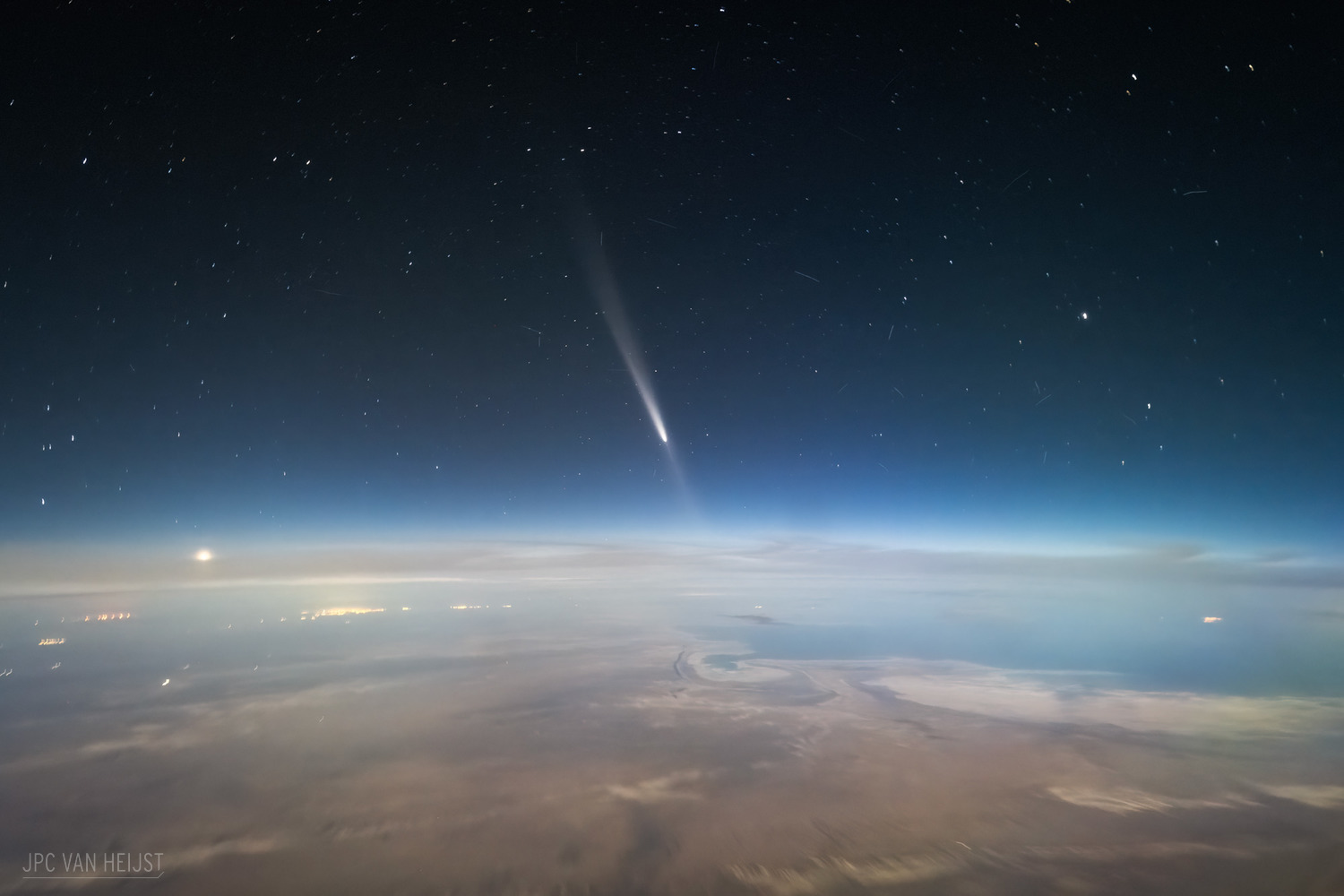Comet C/2023 A3 (Tsuchinshan-ATLAS
16 October 2024At the moment I took this shot, our icy cosmic visitor was making its closest pass by Earth: a mere 44 million miles (71 million kilometres)—about 180 times the distance to the Moon.



A close shave, in astronomical terms. This giant spherical ball of primordial icy debris measures over 2 miles (3.2 kilometres) in diameter and originated from the outer reaches of our solar system, completing an 80,000-year lap around the Sun.
After being slingshot around the Sun and losing much of its mass due to evaporation, it formed a tail stretching over 18 million miles (30 million kilometres) that glows like a bright ribbon among the stars. In this case, we’re also treated to a rare anti-tail: a stream of light that seems to point directly to the Sun, but is actually the glow of the wake it left behind during its solar passage. The implications of these references on human scales and speeds are mind-blowing, reminding me of the immense forces at play in the solar system, not to mention the universe at large.
The last time this comet graced our skies, it was literally in the dawn of humankind. I can only imagine the awe and wonder it must have inspired in those early hominids as they tried to make sense of the world around them.
Recent measurements of C/2023 A3's acceleration indicate that it has likely reached sufficient speed to escape its weakly hyperbolic trajectory from the Sun, meaning it will probably be ejected from our solar system and wander the galaxy for billions of years to come.
With its departure, I’m left in awe of the universe’s vastness and the endless journeys that await—may C/2023 A3 inspire future generations to look up and wonder, no matter from what planet or the amount of eyes they might entail.
Hello and goodbye, my otherworldly friend. Godspeed on your travels, wherever they may lead you.